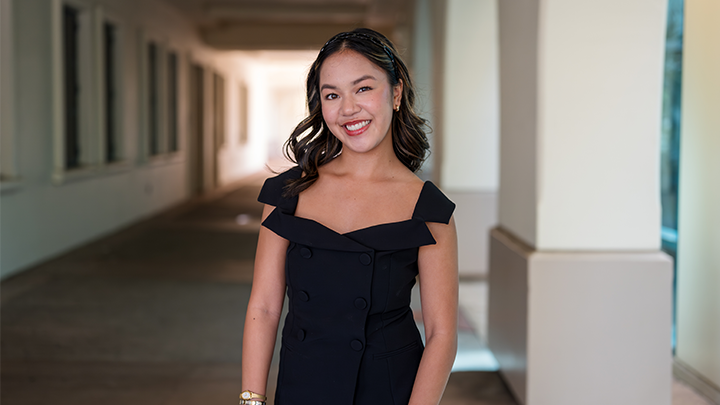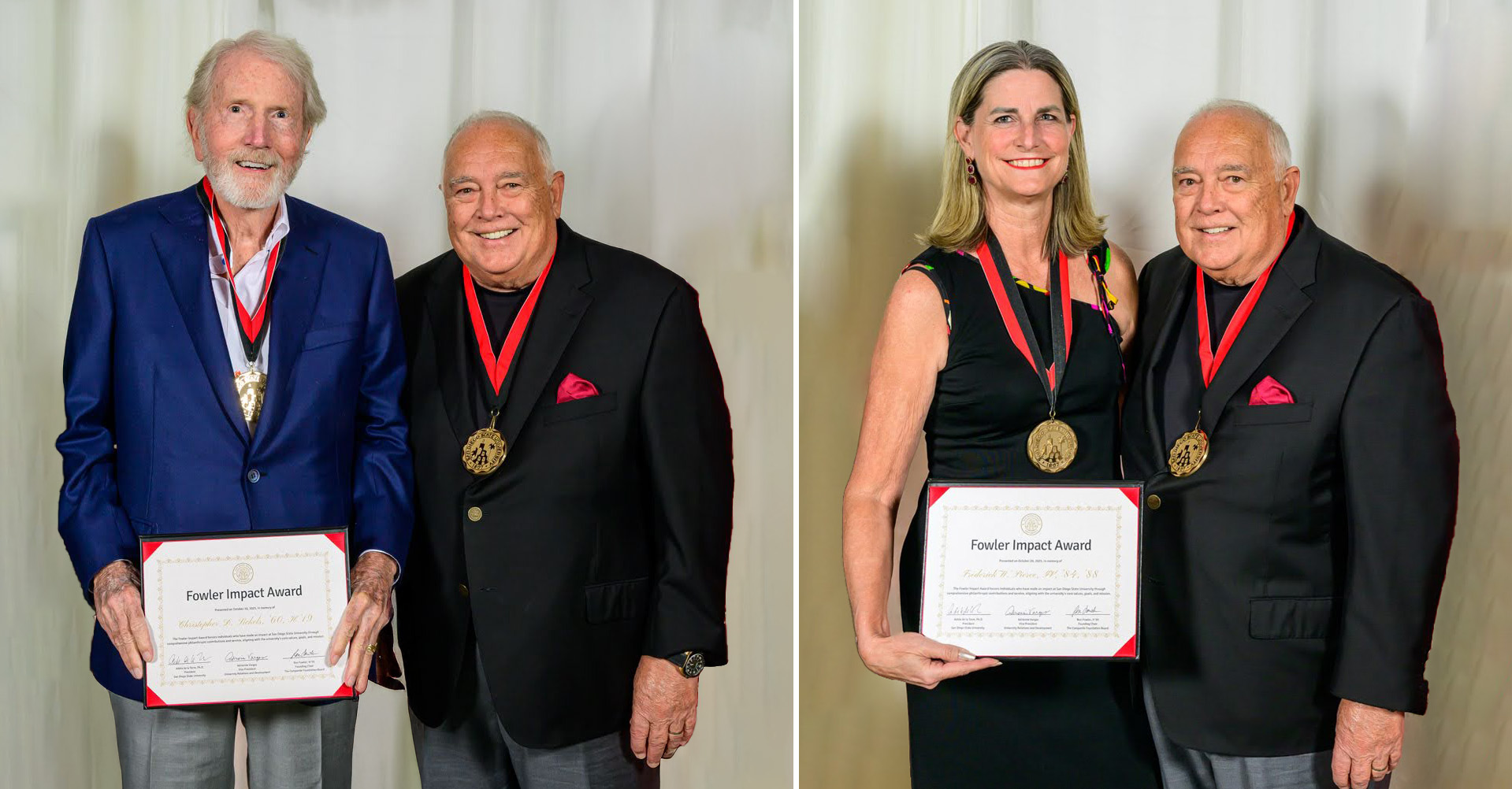Student’s new organization brings Filipinx culture to a younger generation
From adobo to the arts, ‘Bridge the Gap’ seeks to build pride and awareness among Filipino Americans.

Mia Aguimatang said she has always been proud of her Filipinx heritage but, like many young Filipinx Americans, felt disconnected from the culture.
The senior media studies major who aspires to work in the entertainment industry doesn’t speak her ancestral language, Ilocano, which makes it difficult to communicate with her grandparents, who don’t speak much English.
She said talking to a lot of her Filipinx friends, she discovered this was a common refrain.
“If you know anything about Filipino Americans, you know we are very prideful of our culture, so to not be as connected or involved in it is really hard,” Aguimatang said.
So, Aguimatang set out to bridge the gap between generations of Filipinx Americans — literally.
The Chula Vista native co-founded “Bridge the Gap,” a nonprofit organization dedicated to celebrating and preserving Filipino American representation and heritage. In its seventh month, the group has hosted a series of events and mixers that celebrate the culture, educate the younger Filipinx generation about their heritage and showcase the new generation’s talents to their predecessors.
“For my generation, it’s more so us being educated on our roots and our culture, because we only hear about it from our grandparents,” Aguimatang said. “But for the older generation, we wanted them to see what we are doing in the community and how much we are represented now in different ways.”
Aguimatang, who serves as executive director, said her community service background — she is an active member of Bonita Junior Optimist International — played a role in creating the group.
“I’ve always been someone who is big on community service, and I always wanted to create something that gave back to the community,” Aguimatang said. “Then, I started thinking about my heritage and my culture and how representation of Filipino and Asian Americans has become so prominent now, where it wasn’t when I was growing up, and I wanted to do something that would showcase those contributions.”
The group recently had its first major mixer of the fall, “Hello Halo,” a foodie mixer held in Mira Mesa whose name is a play on the timeless Filipino parfait dessert “halo-halo.” Aguimatang said it was great to see the multigenerational crowd enjoy Filipinx food such as chicken adobo, lumpia and ube flavored cheesecake, vendors and listen to performances from up-and-coming Filipinx musicians from the greater San Diego region.
Katherine Morales is a third-year public health major at SDSU who interns for Bridge the Gap. She said the organization and the recent event opened her eyes to the reach of Filipinx culture in the San Diego community, comparing it to the FilAm Festivals she used to attend as a child in her home community of Paradise Hills.
“Being part of the organization has definitely helped me be more involved in the Filipino community,” Morales said. “Being a part of (Hello Halo) and contributing to the way it unfolded helped me become more exposed to how much Filipino American culture we have here.”
Aguimatang, an accomplished dancer who recently was cast in her first music video, said one of the areas she wanted to showcase with the organization is the Filipinx influence on and contributions to the arts, an area where she said she didn’t see her culture represented as prominently when she was growing up.
“My grandparents always wanted me to become a nurse or a doctor, but I always wanted to be involved in arts and entertainment,” Aguimatang said. “I think (through the organization) the older generation will be able to see how much we are doing in the community and in the culture and to see how much we are being represented now, and that is something I want them to see.”
Aguimatang’s parents, Joan and Sam, have watched with pride as their daughter has built the organization from the ground up. The children of first-generation immigrants, Joan said one of the worries of many Filipinx American parents is the culture being lost on the next generation as they assimilate into American culture.
“For me, there’s a sense of relief,” Joan said. “Her organization’s purpose is to know the roots where they came from and keep the legacy of our grandparents alive. Actively wanting to connect says a lot about how (our culture) is going to be preserved in the future.
“I think it’s great what she’s doing, it makes us so proud,” Joan said.
Others who know her on campus said Aguimatang’s passion for her community and her penchant for community service are palpable.
"It doesn't surprise me that she is spearheading a nonprofit as Mia has coordinated events before that have empowered her community,” said Angel Rocha, the associate director of the Undocumented Resource Center, who met Aguimatang when he was an outreach assistant for the former Center for Educational Partnerships, Outreach and Success. “She took part in organizing performances for dance troupes that raised funds for community efforts.
“She has always been driven to represent and support the South Bay community that she and I both call home,” he said of Aguimatang, who attended Bonita Vista High School. “She has always been extremely dedicated to the efforts she engages in, such as working alongside me in coordinating outreach for the Compact for Success program. She takes inspiration from others, and inspires many herself."
When asked where she sees her nonprofit going in five years, Aguimatang said she isn’t afraid to dream big.
“I see the goal as not just being a San Diego thing, but for Filipino Americans all over the country,” she said. “I would like to see the movement take off nationwide. And I know that across the world, there are Filipino Canadians, Filipinos in Australia and other places of the world that are having the same intergenerational conversations, and I’d love it if Bridge the Gap could one day go global. I dream big, I guess.”
For more information about Bridge the Gap SD, visit their website or Instagram page.


